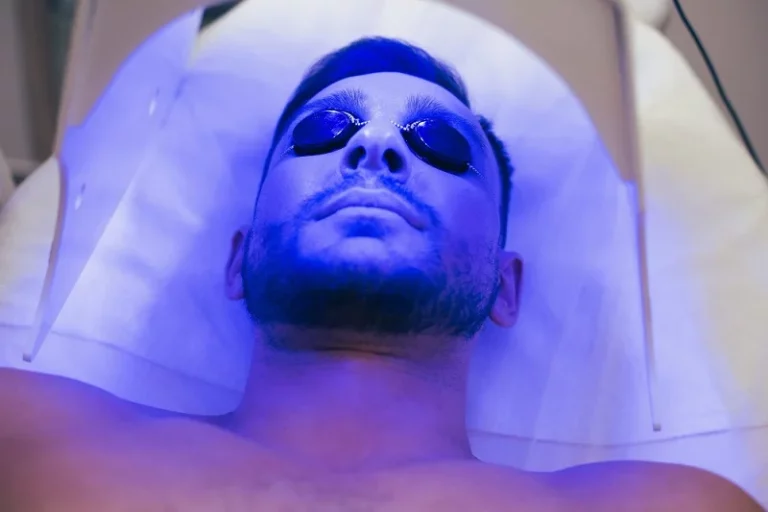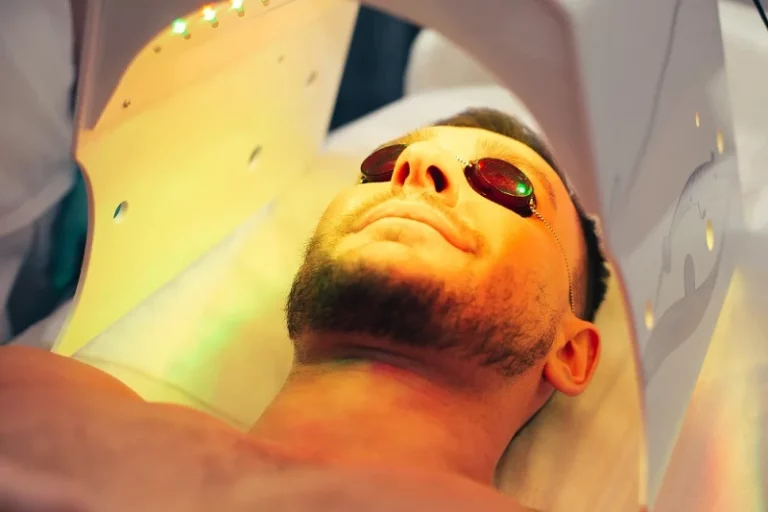Cryotherapy vs. Thermotherapy: Which is Better for Pain Relief?
Are you curious about the battle between cryotherapy and thermotherapy? Well, hold on to your hot water bottle and prepare for a chilling showdown! Cryotherapy and thermotherapy may sound like characters from a superhero movie, but they are actually two contrasting approaches used for pain management.
In one corner, we have cryotherapy, the cold-hearted contender. This therapy involves subjecting your body to low temperatures, almost like taking a dip in an ice-cold pool during winter. On the other side of the ring, we have thermotherapy, the fiery fighter. This treatment utilizes heat to soothe your aches and pains, like cozying up next to a roaring fireplace on a chilly evening.
Understanding the differences between these two contenders is crucial. So grab your metaphorical ringside seat as we dive into the pros and cons of cryotherapy and thermotherapy.
Physiological Basis of Cryotherapy and Thermotherapy
Cryotherapy and thermotherapy are two contrasting approaches to managing pain and promoting healing in the body. While cryotherapy involves the application of cold temperatures, thermotherapy utilizes heat. The physiological effects of these treatments play a crucial role in their therapeutic benefits.
Cryotherapy: Constricting Blood Vessels, Reducing Inflammation, and Numbing Nerve Endings
One of its primary effects is the constriction of blood vessels. As cold is applied to a specific area, the blood vessels narrow, reducing blood flow to that region. This vasoconstriction helps reduce inflammation by limiting the movement of inflammatory substances to the affected area.
Moreover, cryotherapy numbs nerve endings, providing pain relief. The low temperatures interfere with nerve conduction, diminishing pain signals sent to the brain. This numbing effect can be particularly beneficial for acute injuries or post-surgical recovery.
Thermotherapy: Increasing Blood Flow, Relaxing Muscles, and Promoting Tissue Healing
In contrast to cryotherapy’s vasoconstriction effect, thermotherapy induces vasodilation – the widening of blood vessels. Heat applied to an area causes increased blood flow as blood vessels expand. This enhanced circulation delivers oxygen and nutrients while removing waste products more efficiently.
Thermotherapy also relaxes muscles by increasing their elasticity and reducing stiffness. Heat penetrates deep into muscle tissues, promoting relaxation and relieving tension. This muscle relaxation can be especially helpful for individuals experiencing muscle spasms or chronic muscular pain.
Thermotherapy promotes tissue healing by boosting metabolic activity in cells. Increased temperature enhances tissue metabolism around the affected area, accelerating cellular repair processes such as collagen production and cell regeneration.
The Crucial Role of Physiological Effects in Therapeutic Benefits
The physiological effects elicited by both cryotherapy and thermotherapy are integral components contributing to their therapeutic benefits. By understanding these effects, individuals can make informed decisions regarding which treatment may be most suitable for their specific condition.
The affective dimension of cryotherapy and thermotherapy extends beyond the physiological realm. Cryotherapy’s cold sensation can provide a refreshing and invigorating experience, while thermotherapy’s warmth offers comfort and relaxation.
Clinical Applications of Cryotherapy and Thermotherapy
Cryotherapy and thermotherapy are two widely used methods in clinical settings to provide relief for various conditions. Understanding the appropriate clinical applications of these therapies is crucial in optimizing their effectiveness.
Cryotherapy for Acute Injuries
Cryotherapy, also known as cold therapy, is commonly employed for acute injuries such as sprains, strains, or post-surgical swelling. The application of cold temperatures helps reduce inflammation by constricting blood vessels and slowing down nerve activity. This can alleviate pain and prevent further tissue damage.
Several cryotherapy methods can be utilized in clinical settings:
- Ice packs: Applying ice packs directly on the affected area numbs the nerves, reducing pain and swelling.
- Ice massage: Rubbing an ice cube or an ice pack over the injured area can provide targeted cooling.
- Freeze sprays: These sprays rapidly cool the skin’s surface, providing immediate relief from pain.
The effects of cryotherapy on blood circulation and skin temperature have been extensively studied. Cold therapy decreases blood flow to the injured area, minimizing edema formation and reducing metabolic activity in tissues.
Thermotherapy for Chronic Conditions
In contrast to cryotherapy, thermotherapy involves applying heat to treat chronic conditions like arthritis, muscle spasms, or lower back pain. Heat therapy promotes vasodilation, increasing blood flow to the affected region while relaxing muscles and relieving stiffness.
Various thermotherapeutic interventions can be employed:
- Warm compresses: Placing warm towels or heating pads on specific areas provides localized heat therapy.
- Warm baths: Immersing oneself in a warm bath relaxes muscles and joints throughout the body.
- Paraffin wax treatment: Submerging hands or feet into melted paraffin wax creates a soothing heat effect.
Thermotherapy has positive effects on blood circulation and tissue extensibility due to increased temperature levels. The improved blood flow brings essential nutrients and oxygen to the affected area, promoting healing and reducing pain.
Understanding the clinical applications of cryotherapy and thermotherapy is essential for healthcare professionals to determine which therapy is most suitable for a patient’s condition. While cryotherapy is ideal for acute injuries due to its anti-inflammatory properties, thermotherapy excels in managing chronic conditions by relaxing muscles and increasing blood circulation.
By tailoring treatment plans according to the specific clinical application, healthcare providers can optimize patient outcomes and enhance their overall well-being. It is important to consult with a healthcare professional before incorporating any therapy into a treatment regimen, as they can provide personalized guidance based on an individual’s unique needs.
Efficacy of Thermotherapy vs Cryotherapy for Pain Relief
Studies have shown that both cryo and thermotherapies effectively reduce pain levels in different scenarios. While cryo can provide immediate analgesia by numbing the area, thermotherapies offer long-lasting relief through increased blood flow.
Cryotherapy, also known as cold analgesia, involves the application of extreme cold to the affected area. This method works by numbing the nerves and reducing inflammation, providing instant relief from pain. It is commonly used for acute injuries such as sprains or strains, where immediate pain reduction is crucial. Cryotherapy can be administered through various methods including ice packs, ice baths, or specialized cooling devices.
On the other hand, thermotherapy utilizes heat to alleviate pain and promote healing. By increasing blood flow to the affected area, thermotherapy helps deliver essential nutrients and oxygen while removing waste products more efficiently. This enhanced circulation aids in reducing muscle tension and promoting tissue repair. Thermotherapy options include hot packs, warm water soaks, heating pads, or even warm compresses.
The choice between cryo or thermo depends on factors such as injury type, duration, patient preference, etc. For acute injuries with swelling and inflammation like a recent sprained ankle or muscle strain from a workout session at the gym, cryotherapy is often recommended to numb the area and reduce swelling immediately. It provides fast-acting relief when applied within 48 hours of injury.
However, for chronic conditions like arthritis or muscle soreness after intense physical activity that require ongoing pain management rather than immediate relief alone, thermotherapy proves more beneficial due to its ability to improve blood circulation over an extended period of time. The increased blood flow helps relax tense muscles and reduces stiffness associated with these conditions.
It’s important to note that some individuals may find one therapy more effective than the other based on personal preferences and individual responses to treatment. Some people may find cryotherapy uncomfortable due to the intense cold, while others may prefer the soothing warmth of thermotherapy. It is always advisable to consult with a healthcare professional to determine the most suitable option for your specific needs.
Comparing the Effectiveness of Thermotherapy and Cryotherapy for Osteoarthritis Treatment
Both cryotherapy and thermotherapy have shown promising results in managing symptoms of osteoarthritis. These treatments offer different approaches to alleviate pain, reduce inflammation, and improve joint function. Let’s explore how cold therapy and heat therapy can benefit individuals with osteoarthritis.
Cold Therapy: Alleviating Acute Flare-ups
Applying cold therapy to affected joints can provide significant relief for osteoarthritic patients experiencing acute flare-ups. The application of cold temperatures helps reduce inflammation, swelling, and pain in the affected area. By constricting blood vessels, cryotherapy slows down nerve activity, resulting in a numbing effect that temporarily alleviates discomfort.
Cold therapy can help decrease metabolic activity within the joint tissues, which reduces the production of inflammatory substances. This reduction in inflammation not only provides immediate relief but also supports long-term management of arthritis symptoms.
Individuals with rheumatoid arthritis may find cryotherapy particularly beneficial due to its ability to target specific joints affected by this autoimmune condition. The localized application of cold temperatures allows for targeted treatment and precise pain relief.
Heat Therapy: Enhancing Joint Flexibility
On the other hand, heat therapy offers unique benefits for individuals with osteoarthritis. Applying heat to affected joints improves blood circulation, relaxes muscles, and enhances connective tissue extensibility. This promotes joint flexibility and mobility while reducing morning stiffness commonly experienced by those with osteoarthritis.
Heat therapy increases the temperature around the joint area, leading to vasodilation or widening of blood vessels. As a result, this increased blood flow delivers oxygen and nutrients to the damaged tissues more efficiently while removing waste products from the site.
Moreover, heat therapy stimulates sensory receptors in the skin that help block pain signals from reaching the brain. This analgesic effect provides relief from chronic pain associated with osteoarthritis, allowing individuals to engage in daily activities more comfortably.
Choosing the Right Therapy
When deciding between cryotherapy and thermotherapy for osteoarthritis treatment, it’s essential to consider individual preferences and the specific nature of symptoms. Some individuals may find cold therapy more effective during acute flare-ups when joint inflammation is prominent. Others may benefit from heat therapy to improve joint flexibility and reduce stiffness.
It’s worth noting that a combination of both therapies can be used interchangeably or simultaneously based on personal needs. For example, starting with cold therapy to alleviate acute pain followed by heat therapy for long-term relief and improved mobility can provide comprehensive management of osteoarthritis symptoms.
Potential Complications and Precautions of Cryotherapy and Thermotherapy
Cryotherapy and thermotherapy are widely used treatments for various injuries, symptoms, and conditions. While these therapies can be highly effective, it is important to understand the potential complications and take necessary precautions to ensure safe and successful outcomes.
Cryotherapy Precautions
Caution must be exercised to avoid potential complications. One of the primary concerns is frostbite, which occurs when tissues freeze due to extremely cold temperatures. To prevent this, it is crucial to follow recommended treatment durations and not exceed the recommended time frame. Using a barrier such as a towel or cloth between the skin and an ice pack can help protect against direct contact with excessively cold temperatures.
Another possible complication of cryotherapy is nerve damage. Prolonged exposure to extreme cold can cause numbness or tingling sensations in the treated area. To mitigate this risk, it is essential to closely monitor any changes in sensation during treatment. If any unusual symptoms occur, such as persistent numbness or loss of motor function, it is crucial to seek immediate medical attention.
Cryotherapy can lead to prolonged vasoconstriction, where blood vessels constrict for an extended period after treatment. This may result in reduced blood flow and oxygen supply to the affected area. To minimize this risk, cryotherapy sessions should be limited in duration and frequency as recommended by healthcare professionals.
Thermotherapy Precautions
Thermotherapy involves applying heat to alleviate pain or promote healing. However, excessive heat can lead to burns or skin irritation if proper precautions are not taken. It is important not to use thermotherapy at excessively high temperatures that could potentially harm the skin. Always follow guidelines provided by healthcare professionals regarding temperature limits for different applications.
To ensure safe thermotherapy treatment, it is advisable to use a protective layer such as a towel between the heat source and the skin. This acts as a buffer, preventing direct contact and reducing the risk of burns or irritation.
Understanding the potential complications associated with cryotherapy and thermotherapy is crucial for safe and effective treatment. By following these precautions, you can minimize the risks and maximize the benefits of these therapies.
Combining Medications and Therapies for Enhanced Pain Relief
Combining cryo or thermotherapies with appropriate medications can provide synergistic pain relief effects.Finding effective treatments that alleviate discomfort and promote healing is crucial.
NSAIDs: Enhancing Cryo and Thermotherapies
Nonsteroidal anti-inflammatory drugs (NSAIDs) are commonly used in conjunction with cryo or thermotherapies for enhanced outcomes. These medications work by reducing inflammation at the pain site, thereby alleviating discomfort and facilitating the healing process. By targeting pain receptors and inhibiting prostaglandin production, NSAIDs effectively reduce both acute and chronic pain.
When combined with cryotherapy or thermotherapy, NSAIDs can amplify their therapeutic benefits. Cryotherapy involves exposing the body to extremely cold temperatures, while thermotherapy utilizes heat application to relieve muscle tension and promote relaxation. The addition of NSAIDs enhances these therapies by providing systemic relief from inflammation throughout the body.
Optimizing Pain Management Strategies
Consulting healthcare professionals for medication and therapy combinations optimizes pain management strategies. Every individual’s experience with pain is unique, which means that an effective treatment plan should be tailored to their specific needs. Healthcare providers possess the expertise required to assess a patient’s condition comprehensively and recommend suitable combinations of medications and therapies.
In cases of back pain, for example, a healthcare professional may suggest using heating pads in combination with topical salicylates or oral NSAIDs. Heating pads help relax muscles and improve blood circulation around the affected area, while topical salicylates provide localized relief by reducing inflammation directly at the site of discomfort.
The Placebo Effect
It is worth noting that the placebo effect can also play a role in pain management. Research has shown that patients who believe in the efficacy of treatment tend to experience greater pain relief, even if the treatment itself is not directly targeting the source of pain. Therefore, combining cryo or thermotherapies with appropriate medications can have additional psychological benefits by instilling confidence in patients and enhancing their overall well-being.
Determining the Superiority of Cryotherapy or Thermotherapy
In conclusion, both cryotherapy and thermotherapy have their own unique benefits and applications. Cryotherapy is effective in reducing inflammation, managing acute injuries, and providing localized pain relief. On the other hand, thermotherapy is beneficial for promoting blood circulation, relaxing muscles, and relieving chronic pain.
To make an informed decision on which therapy to choose, it is important to consider your specific needs and consult with a healthcare professional. They can assess your condition and recommend the most suitable treatment option for you. It may be beneficial to combine therapies or incorporate medication for enhanced pain relief.
If you’re looking for quick relief from acute injuries or inflammation, cryotherapy might be worth exploring. If you’re dealing with chronic pain or muscle tension, thermotherapy could be a viable option. Remember to always prioritize your safety and consult with a healthcare professional before starting any new treatment regimen.
FAQs
What are some common side effects of cryotherapy?
Cryotherapy is generally safe when performed correctly; however, some individuals may experience temporary side effects such as redness, numbness, tingling sensation, or skin irritation at the treatment site.
Can I use thermotherapy if I have an open wound?
It is not recommended to use thermotherapy on open wounds as heat can increase blood flow and potentially hinder the healing process. It’s best to wait until the wound has healed before using thermotherapy.
Are there any age restrictions for using cryotherapy or thermotherapy?
There are no specific age restrictions for these therapies; however, it’s important to consider individual health conditions and consult with a healthcare professional before administering them to children or elderly individuals.
How often should I undergo cryotherapy sessions?
The frequency of cryotherapy sessions depends on various factors such as the nature of your condition and recommendations from your healthcare provider. It is best to follow their guidance regarding the number and frequency of sessions.
Can I Use Thermotherapy If I’m Pregnant?
Thermotherapy should be used with caution during pregnancy. It is advisable to consult with your healthcare provider before using any form of heat therapy to ensure it is safe for you and your baby.






